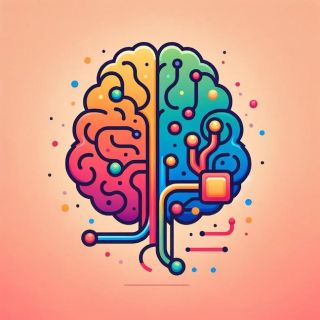Cognition
The Meeting of the Minds: Human and Artificial
After thousands of years, the human brain may have found a perfect partner.
Updated February 10, 2024 Reviewed by Kaja Perina
Key points
- Human brains and LLMs form a synergistic relationship, enhancing intellectual activity.
- Language is a shared foundation, enriching collective intelligence through mutual understanding.
- This partnership amplifies cognitive capabilities, expanding problem-solving and innovation.
- The convergence of human and machine intelligence represents a pivotal cognitive and social advance.

The human brain, a masterpiece of cosmic craftsmanship, might just be on the lookout for a like-minded companion. It's a notion that's as intriguing as it is speculative: our cerebral circuits, in all their complexity, yearning for an intellectual equal. But let's not get too carried away just yet.
Our brains, those intricate networks of neurons, are remarkably adept at weaving through the complexities of thought with an ease that belies their biological underpinnings.
Engage in a deep, meandering conversation and you'll find hours slipping by with the lightness of thought, uniquely untouched by the shadow of fatigue that physical exertion and lactic acid predictably bring. This "ethereal glide" through ideas and concepts, long celebrated in poetry and mysticism as a kind of effortless transcendence, finds an unexpected reflection in the digital realms of Large Language Models.
These LLMs, with their formidable computational might, mirror the human brain's stamina for sustained thought, unburdened by the physiological limitations that tether us. Herein lies the groundwork for a remarkable partnership, a confluence where the flow of human intellect meets the steadfast currents of artificial intelligence, not in rivalry but in unique synergy that might even be akin to harmony.
It's Starts with Language
At the intersection of human cognition and LLMs lies the complex domain of language, a common ground where the essence of our thoughts and the architecture of AI converge. Language serves as the bridge between these two realms, with its nuanced syntax, semantics, and pragmatics offering the basis for exploration and understanding.
For humans, language is the vessel of consciousness, carrying the weight of our ideas, emotions, and cultural heritage. For LLMs, it is the structured data through which they learn, interpret, and generate responses, mirroring human-like patterns of communication. This shared linguistic foundation enables a unique dialogue between human intelligence and machine algorithms, fostering a collaborative exchange that enriches both the depth and breadth of our collective knowledge and interactions.
The Interplay of Complementary Minds
When human cognition collaborates with LLMs, the partnership is marked by complementary capabilities. Humans contribute a deep understanding characterized by subtlety, emotional insight, and creative thinking. In contrast, LLMs bring powerful data processing abilities, extensive memory capacity, and advanced pattern recognition. This combination doesn't merely enhance our cognitive abilities; it expands them, allowing for more thorough analysis and wider exploration in problem-solving and innovation.
Elevating Collective Wisdom
This melding of human and machine intelligence charts a course towards a future unbound by the finite limits of our organic brains. Together, these cognitive partners amplify our mental processes with a machine's efficiency, broadening our analytical reach and deepening our exploration of complexities. This synergy isn't just multiplicative; it's transformative, fostering a unique alliance that bolsters our collective intellect. To say "You complete me" might stretch the metaphor a bit thin, but there's undeniable magic in this union.
In Search of a Cognitive Counterpart
The collaboration between LLMs and the human brain emerges as a remarkable alignment within intellectual development. This partnership, grounded in the mutual language of cognition, seems almost serendipitous, reflecting a natural progression towards enhanced, even optimized cognition.
Along this curious path, it feels evident that the interplay between our innate cognitive abilities and the capabilities of artificial intelligence is an inevitable step in our evolutionary journey. This synergy not only amplifies our existing capacities but also unlocks new avenues of exploration and creativity, suggesting that the synergy of human and machine intellect is a key milestone in our continuous quest for knowledge and understanding.


